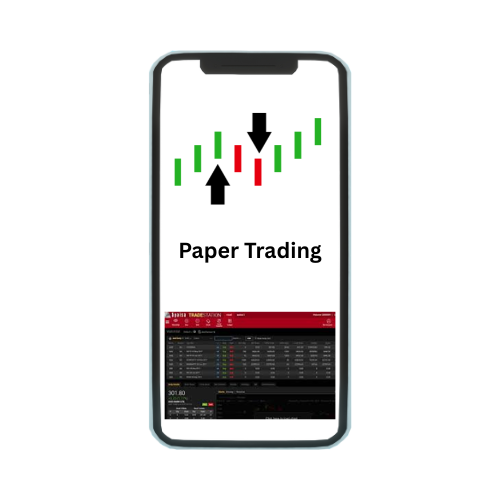Overnight trading, a practice prevalent in financial markets, involves the buying and selling of financial instruments outside of regular trading hours. It enables traders to react to market developments and news that occur after the closing bell of major exchanges, typically from 4:00 PM to 9:30 AM Eastern Time (ET). This form of trading provides opportunities to capitalize on global market events and price movements that may occur when the primary exchanges are closed. It allows for flexibility in trading, offering potential profit opportunities and the ability to adjust positions based on new information or market sentiment overnight. However, it also carries significant risks, including price volatility, reduced liquidity, and the potential for overnight gaps between the closing and opening prices of securities.
What Is Overnight Trading?
- Overnight trading refers to the practice of buying or selling financial assets outside of regular trading hours, typically after the main stock exchanges have closed for the day. In the United States, this period generally spans from 4:00 PM to 9:30 AM Eastern Time (ET).
- The primary motivation behind overnight trading is to capitalize on news and events that occur outside of standard market hours, such as economic data releases, earnings reports, or geopolitical events that can impact asset prices.
- This extended trading window allows traders to react to market-moving information before the market opens the next day, potentially gaining an advantage over traders who only operate during regular trading hours. However, overnight trading can also be riskier than daytime trading due to lower liquidity and the potential for larger price fluctuations, often referred to as “gapping,” between the closing and opening prices of securities.
What Are the Overnight Trading Hours?
- The overnight trading hours refer to the time period during which financial markets allow trading outside of regular trading hours. In the United States, these hours typically begin after the regular market closes at 4:00 PM Eastern Time (ET) and extend until the pre-market session begins at 9:30 AM ET the following day.
- During these hours, traders can continue to buy and sell stocks, commodities, or currencies through electronic communication networks (ECNs) and other platforms that facilitate after-hours trading.
- This extended trading period allows traders to react to news and events that occur after the closing bell, such as earnings releases or economic data reports, which can influence asset prices before the market opens again.
- While after-hours trading provides opportunities for investors to capitalize on market movements, it also carries risks, including lower liquidity and potentially higher volatility compared to regular trading hours. Traders should be aware of these factors and use appropriate risk management strategies when engaging in overnight trading.
How To Place An Overnight Trading Order?
Placing an overnight trading order involves a process similar to placing orders during regular trading hours but with a few important considerations. To start, traders can use their brokerage platforms, which typically remain open after the regular market closes at 4:00 PM Eastern Time (ET). They can specify the stock or financial instrument they wish to trade, the quantity they want to buy or sell, and the type of order they want to place, such as a market order or a limit order.
Here are some pointers on how to place an overnight trading order:
- Brokerage Platform: Use your brokerage’s online platform or mobile app, which allows trading outside of regular market hours.
- Selecting the Stock: Choose the specific stock or financial instrument you want to trade overnight.
- Quantity: Enter the quantity of shares or contracts you wish to buy or sell.
- Order Type:
- Market Order: This order executes at the best available price in the market when the order is placed.
- Limit Order: Specify the price at which you want to buy or sell. The order will only execute at your specified price or better.
- Time Frame: Specify that the order is for after-hours trading. This ensures that the order is not executed during regular market hours.
- Review and Confirm: Double-check all the details of your order, including the quantity, order type, and time frame. Confirm the order to execute it.
- Monitoring: After placing your order, monitor the market closely for any developments that may affect your trade. Overnight trading can be volatile, so it’s essential to stay informed.
- Cancellation: You can typically cancel an overnight order before the market opens if your circumstances or market conditions change.
It’s important to note that overnight trading carries risks, including lower liquidity and potentially wider bid-ask spreads. Traders should use caution and consider their risk tolerance and trading strategy when engaging in after-hours trading.
What Are the Benefits Of Overnight Trading?
Overnight trading offers several benefits for traders who are looking to capitalize on market opportunities outside of regular trading hours. Here are the detailed benefits:
- Global Market Opportunities: Overnight trading allows traders to react to global news and events that occur outside of regular market hours. This includes economic data releases, corporate earnings reports, and geopolitical developments that can impact asset prices overnight. By participating in overnight trading, traders can take advantage of market movements that occur in international markets while the primary exchanges are closed.
- Extended Trading Hours: It provides flexibility to traders who may not be able to actively trade during regular market hours due to work or other commitments. Overnight trading allows them to manage their portfolios and execute trades after normal market hours, accommodating different time zones and schedules.
- React to After-Hours Earnings Reports: Many companies release their earnings reports after the market closes. Overnight traders can react to these reports immediately, potentially benefiting from significant price movements before the next trading session.
- Opportunity for Price Gaps: Overnight trading can lead to price gaps between the closing price of one trading day and the opening price of the next day. Traders who correctly anticipate these movements can profit from buying or selling assets at advantageous prices.
- Less Competition: Compared to regular trading hours, there is typically less competition and fewer traders participating in overnight sessions. This can reduce trading costs, such as bid-ask spreads, and provide opportunities for traders to execute orders more efficiently.
- Preparation for Next Day’s Trading: Overnight trading allows traders to position themselves ahead of the next trading day. They can adjust their portfolios based on overnight developments, potentially mitigating risk or taking advantage of emerging trends.
- Hedging and Risk Management: Overnight trading enables traders to hedge their positions or manage risk by reacting to market-moving events that occur after regular trading hours. This can help protect their portfolios from unexpected price movements.
- Diversification of Trading Strategies: By engaging in overnight trading, traders can diversify their trading strategies beyond the constraints of regular market hours. This flexibility can lead to a more balanced and comprehensive approach to investing.
Example Of Overnight Trading In A Stock
- An example of overnight trading in a stock could involve a scenario where a company releases its quarterly earnings report after the regular market hours have closed. If the earnings report exceeds analysts’ expectations, there may be a surge in demand for the company’s stock in the after-hours trading session.
- Traders who anticipate a positive earnings surprise may place overnight buy orders, aiming to capitalize on the expected price increase when the market opens the next day. Conversely, if the earnings report disappoints, traders might place overnight sell orders to avoid potential losses from a decline in the stock price when trading resumes. This example illustrates how overnight trading allows investors to react swiftly to new information that impacts stock prices, providing opportunities to profit from significant price movements before the market opens. It underscores the importance of monitoring news and events outside of regular trading hours to make informed decisions in overnight trading sessions.
What Is An Overnight Trading Strategy?
- An overnight trading strategy is a set of rules and techniques that traders use to capitalize on opportunities in the extended trading hours after the regular market closes. One common strategy is based on earnings announcements. Traders may analyze companies expected to release earnings after the market closes, anticipating either a positive surprise or a disappointment. They could place buy orders before the announcement if they expect positive news or short sell if they expect negative news.
- Another strategy involves trading based on news events that occur after hours, such as economic data releases, geopolitical events, or corporate announcements. Traders may also use technical analysis indicators that apply specifically to after-hours trading, such as extended-hours moving averages, to identify potential entry and exit points.
- Overall, successful overnight trading strategies require careful analysis, risk management, and the ability to react quickly to market-moving events outside of regular trading hours.
Is Overnight Trading Profitable?
- The profitability of overnight trading depends on various factors, including market conditions, the trader’s strategy, and their ability to manage risks effectively. Overnight trading can be profitable for experienced traders who understand the dynamics of after-hours trading and can capitalize on market-moving events.
- It provides opportunities to react to news and developments that occur outside regular trading hours, such as earnings reports, economic data releases, or geopolitical events. However, overnight trading also carries risks, such as increased volatility, lower liquidity, and the potential for price gaps between the closing and opening prices of securities.
- Traders must carefully analyze the risks and potential rewards of each trade, implement effective risk management strategies, and be prepared to react quickly to unexpected market movements. Overall, while overnight trading can be profitable under the right conditions, it requires skill, discipline, and a thorough understanding of the markets to be consistently successful.
Conclusion
In conclusion, overnight trading offers traders the opportunity to capitalize on market movements and events that occur outside of regular trading hours. It allows for flexibility and the potential to profit from global market developments, earnings reports, and economic data releases. However, it comes with significant risks, including increased volatility and lower liquidity, which can amplify the impact of market movements. Successful overnight trading requires careful planning, thorough analysis, and disciplined risk management. Traders must stay informed about market news and events, adapt their strategies accordingly, and be prepared to react swiftly to changing market conditions. While overnight trading can be profitable for experienced traders who understand these risks and opportunities, it is essential to approach it with caution and use prudent trading practices to mitigate potential losses.
Frequently Asked Questions
Overnight trading involves holding positions overnight, whereas day trading involves closing all positions before the market closes.
Overnight trading can be profitable, but it requires careful planning and understanding of the market’s after-hours dynamics.
Traders should consider liquidity risks, price gaps, and the potential for increased volatility when engaging in overnight trading.






